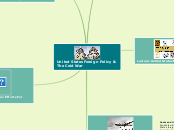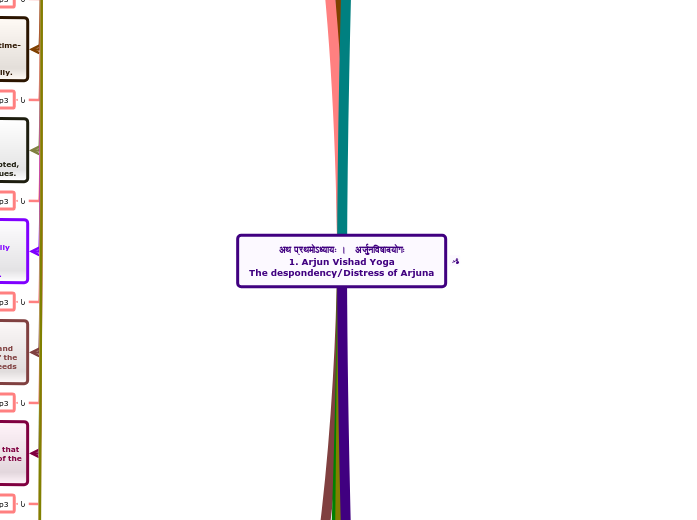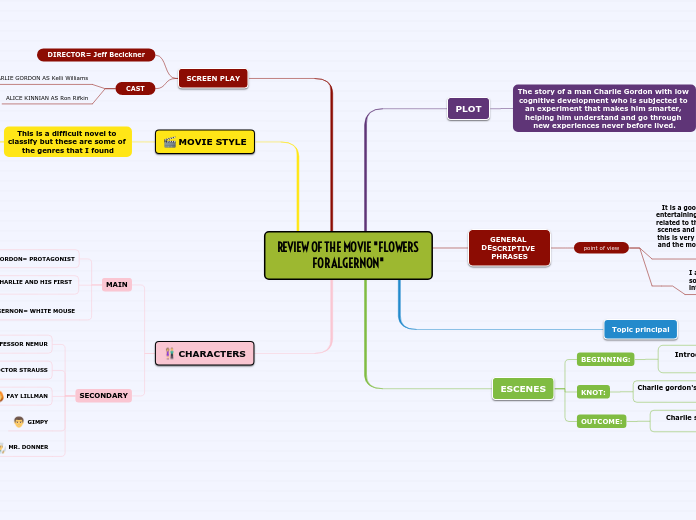REFERENCES
Characters (Picture Reference):
The Complete List of Tangled Characters (Movie & Series) by @DisneyLove. (2023, March 15). Listium. https://listium.com/@DisneyLove/83522/the-complete-list-of-tangled-characters-movie--series
Dialogue (Picture Reference):
Kasch, A. (2022). How to Plant and Create a Habitat for Pollinators. Angi. https://www.angi.com/articles/planting-pollinators.htm
Plot (Picture Reference):
The Complete List of Cinderella Characters by @DisneyLove. (2022, December 20). Listium. https://listium.com/@DisneyLove/78528/the-complete-list-of-cinderella-characters
Settings (Video Reference):
Pixar. (2015, March 11). Inside Out - Official US Trailer 2 [Video]. YouTube. https://www.youtube.com/watch?v=1HFv47QHWJU
Acts and Scenes (Video Reference):
Nerdstudy. (2017, August 9). Romeo and Juliet Summary (Act 1 Scene 2) - Nerdstudy [Video]. YouTube. https://www.youtube.com/watch?v=x6VVZoFNJLo
Stage Directions (Video + Picture Reference):
Margo Botelho. (2020, May 23). Stage Movement & Blocking: Definition & Rules - Video & Lesson Transcript | Study.com [Video]. YouTube. https://www.youtube.com/watch?v=pwoi1eaSYHs
What is Drama? (Journal Reference):
University Of Chitral Journal of Linguistics and Literature. (2020). Drama (Introduction). ResearchGate. https://doi.org/10.13140/RG.2.2.22661.50400
Student Engagement (Journal Reference):
Cawthon, S. W., Dawson, K., & Ihorn, S. (2011). Activating student engagement through Drama-Based instruction. Journal for Learning Through the Arts, 7(1). https://doi.org/10.21977/d97110007
Collaboration and Cooperation (Journal Reference):
McLauchlan, D. (2001). Collaborative Creativity in a High School Drama Class. Youth Theatre Journal, 15(1), 42–58. https://doi.org/10.1080/08929092.2001.10012530
Active Learning (Video Reference):
Sprouts. (2020, October 1). The Active Learning Method [Video]. YouTube. https://www.youtube.com/watch?v=xxVxgQJwV7w
High Order Thinking Skills (Journal Reference):
Cawthon, S. W., Dawson, K., & Ihorn, S. (2011). Activating student engagement through Drama-Based instruction. Journal for Learning Through the Arts, 7(1). https://doi.org/10.21977/d97110007
Fun Learning (Video Reference):
eHowEducation. (2014, May 21). Drama Games for Primary School Children : Preschool Education & Beyond [Video]. YouTube. https://www.youtube.com/watch?v=uGxKZlOnOus
Builds Confidence (Journal Reference):
Angelianawati, L. (2019). Using Drama in EFL Classroom. Journal of English Teaching, 5(2), 125. https://doi.org/10.33541/jet.v5i2.1066
Language Acquisition (Video Reference):
English for Asia. (2022, April 8). Learn English through Drama [Video]. YouTube. https://www.youtube.com/watch?v=vCes8DU1XCE
Communication Skills (Video Reference):
Team Building Games. (2016, December 11). Communication Exercises - Role Play Game *25 [Video]. YouTube. https://www.youtube.com/watch?v=lW7vVB3XdCY
Cultural Understanding (Video Reference):
therhodeshow. (2017, February 13). Teaching children about diversity [Video]. YouTube. https://www.youtube.com/watch?v=tfw7bn464pY
Active Engagement (Video Reference):
Drama Menu. (2017, October 2). Theatre Game #7 - Heads Up, Heads Down [Video]. YouTube. https://www.youtube.com/watch?v=pGE2PZPqkyU
The Elements and Benefits of Children's Drama in the Primary ESL Classroom
Benefits
Improving Language &
Communication Skills
As they motivate students to use English in a useful and relevant context, drama exercises may be very helpful for enhancing language and communication skills among ESL learners. Students get plenty of opportunities to use the language in many contexts, which helps them improve their vocabulary, sentence construction, and fluency.
Builds Confidence
Drama exercises may be a very effective way for ESL students to gain confidence. Dramatic activities not only improve language proficiency but also give students a supportive, engaging environment to help them overcome language hurdles and build self-confidence.
"Although theatre is used in English classes primarily to foster language proficiency and creativity rather than for display, teachers should never prevent their students from acting out their scenes in front of the class or a wider audience if they so want. Supporting them as they participate in the theatrical exercises might encourage more passion and inventiveness." (Angelianawati, 2019)
Fun Learning
In an ESL classroom, drama serves as an effective and entertaining teaching method. Dramatic tactics may be included into ESL classes to make them more dynamic and interesting. Participating in role-plays, skits, or impromptu games is frequently more pleasant for students than doing regular language drills.
This video highlights an activity that is aligned with the concept of "Fun Learning".
High Order
Thinking Skills
Drama can serve as a powerful tool for fostering higher-order thinking abilities including critical thinking, problem-solving, creativity, and communication in ESL classrooms. Dramatic exercises may challenge students to think critically and use their language abilities in real-world contexts while also involving them in meaningful and genuine language use.
"Drama activities develops emotional intelligence while requiring higher-order cognitive abilities. Some kids may be marked by this change in roles and knowledge-making; nevertheless, drama-based practise may point out socially constructed markings and provide room for new signs of self-efficacy to appear." (Cawthon, Dawson, & Ihorn, 2011).
Active Learning
Drama isapowerful teaching method in an ESLclassroomsfor encouraging active learning. Dramatic methods and exercises may be included into ESL courses to engage students on various levels, improve language proficiency, and create a more engaging and participatory learning environment.
An overview of Active Learning
Collaboration &
Cooperation
A healthy and productive ESL (English as a Second Language) classroom atmosphere for theatre activities requires collaboration and teamwork. These components support the development of social skills, self-assurance, and linguistic proficiency in pupils.
"In keeping with Vygotsky's constructivist theories, theatre provides a setting for learning and knowledge generation through social interactions between participants. The concept that creativity happens through enactment and eventually results in a rich and original product was underlined into collaborative creativity. As a result, collaboration and cooperation is an integral part of drama activities." (McLauchlan, 2001).
Student Engagement
For learning and skill development to be successful in an English as a Second Language (ESL) theatre class, student participation is essential. Drama offers ESL students a distinctive and engaging platform to increase their language competence while also advancing their general communication abilities, cultural awareness, and creative abilities.
"According to levels of on-task behaviour,student engagement is definedas active involvement in classroom activities. Using their prior knowledge and experiences, students are prompted to engage in critical thinking tasks and apply what they learn to their own life. This is known as authentic instruction." (Cawthon, Dawson, & Ihorn, 2011).
Correlation Between
Elements & Benefits
Drama can be a valuable tool in English as a Second Language (ESL) classrooms, as it helps to create an engaging and interactive learning environment. There is a strong correlation between various elements of drama and the benefits they can bring to ESL students.
Active Engagement
Drama engages students physically, emotionally, and intellectually by nature.
ESL students are hence more likely to remain engaged and concentrated throughout classes, which may result in improved language skill retention.
A short video about an activity that promotes active engagement in the ESL drama classroom.
Cultural Understanding
Dramatic experiences can introduce kids to many viewpoints and encounters, fostering understanding and empathy of other cultures. ESL students acquire the ability to accept many points of view and develop into more tolerant people as a consequence.
A short video, highlighting the importance of cultural understanding.
Communication Skills
A video highlighting an activity on improving communication skills through role-play.
Drama allows children to communicate effectively by encouraging them to express themselves, negotiate meaning, and engage with classmates.
As a result, ESL students gain more self-assurance while speaking English in casual settings, both inside and outside of the classroom.
Language Acquisition
A short video, highlighting the effectiveness of using drama activities with ESL learners, especially children.
Students can actively employ the target language while participating in drama events. To fully engage, they must talk, listen, and occasionally even write in English.
As a consequence, kids may regularly practise their language abilities via theatre, which helps them with their vocabulary, fluency, pronunciation, and understanding.
What is Drama in an ELS classroom?
Drama in an ESL (English as a Second Language) classroom refers to using theatrical methods, exercises, and activities to improve English language learners' language learning experiences. Dramatic exercises can be a very effective and entertaining technique for ESL students to advance their language abilities, including speaking, reading, writing, and listening.
"Because characters are given parts and act them out while the action is performed on stage, it is a literary genre that is intended for the theatre. These characters can be people, spirits, animals, deceased people, or abstract traits. Drama is the staging of an adaptation, reproduction, or mirror of reality. The term "dramatist" is typically used to describe any artist who contributes to a dramatic composition, whether through writing or performance." (University Of Chitral Journal of Linguistics and Literature, 2020).
Elements
Settings
The time, place, and mood of a scene or tale may all be established with the use of settings, which are a crucial element of theatre activities. For instance:
Inside Out - Official US Trailer 2
Time Period: A scene's or play's time period is essential for establishing the context. In what time period does it take place? For authenticity, historical correctness in language, props, and clothing might be crucial. In this trailer, memories are used to signify the different time periods.
Props are items that performers use to interact with their surroundings. They can aid in establishing the scene's context and improve the audience's comprehension of it. In this trailer, there are many props the characters are provided to use and interact with.
Location: The scene's setting should indicate the precise spot where the action is taking place. This setting might be a particular room, an outdoor area, a city street, or anything else. In this trailer, multiple scenes show various locations to indicate the setting.
Stage Directions
Stage directions are instructions in a play or theatrical performance that are given to performers, directors, and other production staff to help them stage and perform the work. These instructions include specifics for the positions of the actors and items on stage as well as their movements, gestures, and physical acts. Stage directions are usually written in italics or enclosed in brackets, and they are not intended to be uttered by the performers; rather, they are intended to assist the author communicate his or her vision for the production.
A video explaining about Stage Directions
Stage Directions example
Acts and
Scenes
There are many acts and scenes in theatrical activities. The plot and action of the play are organised and structured using them.
An example of an act + scene from the script of Romeo and Juliet
Acts contain smaller subunits called scenes. They often take place in a single setting over an extended period of time and serve to symbolise particular events or episodes in the play. In other words, scenes show a continuous chain of actions taking place in the same setting.
For easier identification within the act, scenes are given numbers or titles like "Act 1, Scene 1" or just "Scene 1." The actors and the audience can both maintain track of where they are in the play thanks to this numbering.
The main divisions or portions of a play are called acts. Imagine them as substantial sections of a book or as parts of a TV show. Typically, each act comprises a major chunk of the broader narrative or storyline.
The number of acts of a play varies depending on the playwright's goal and the intricacy of the plot, and plays typically include numerous acts. Three-act, four-act, or five-act plays are common divisions.
Plot
The events that make up a tale are arranged according to a plot. The general format of a tale is referred to as its structure, or narrative structure.
The plot's conclusion, or dénouement, occurs at this point. This is the denouement, where the plot is tied up and the characters' new sense of normalcy is established. The main conflict has been totally resolved at this point in the novel, all the loose ends have been tied off, and the reader has been given closure on the story.
The section of the story that comes after the climax is known as the falling action. The primary conflict has been resolved at this point in the narrative, and the strain is beginning to lessen. Many of the important, looming questions in the novel have been resolved since the reader is aware of the outcomes and effects of the finale.
The section of the story that the entire action has been leading up to is the climax. The most thrilling and significant section of the tale is frequently the climax or turning point of the storyline. The decisions and occurrences in this section of the story will have an impact on how the remainder of the narrative unfolds.
In the rising action section of the story, if the main conflict is not established in the exposition stage, it is introduced here. If the conflict has already been established, it is expanded upon in this rising action stage to heighten the reader's and the story's sense of unease.
A classic example of rising action. where her dress got torn to bits my her step-sisters.
The introduction, usually referred to as the exposition, is the initial section of the plot. The primary characters and the environment of the tale are introduced and established during this section of the plot. This is crucial to the reader's comprehension of the narrative.
A scene in Cinderella, where we were first introduced to her character.
Dialogue
Dialogues are a vital component of theatre and are essential for telling the tale, creating the characters, and capturing the audience's attention.
Examples of Dialogue
Play Script: A colon and the dialogue are placed after the character's name on the left in a play script. There is no need for speech marks.
Sam: Today, we're going to plant flowers at the park.
Jenny: Wow! I love flowers!
Scene example
Written Speech - Speech or quote marks are employed when writing speech. This may be found in most written texts with conversation, including books, news stories, and magazine articles.
"Today, we're going to plant flowers at the park," said Sam.
"Wow! I love flowers!" exclaimed Jenny.
Characters
Drama's entire impact and effectiveness depend heavily on its characters, who play a key part in the plot. Any dramatic story's heart and soul, their growth and interactions are what move the plot ahead.
Supporting Roles
Supporting characters have a variety of functions in the narrative, and their significance might change. They provide the drama's universe structure and complexity, People who have an impact on the protagonist's journey can all be considered supporting characters.
Pascal serves as a supporting character in the story, as the protagonist's trusty pet and comic relief.
Deuragonist
The deuteragonist is the secondary main character in the story. They frequently play an important role in the story and have a close relationship with the protagonist. Although deuteragonists may have their own character arcs and growth, they are not the main subject of the story.
Flynn Rider is a deuteragonist, formerly a criminal, he undergoes development to be a potential love interest for the protagonist.
Antagonist
The antagonist is the character or force that opposes the protagonist. Antagonists put the protagonist through struggle and difficulties, which adds tension and moves the story forward.
Mother Gothel is the primary antagonist, her motivations involves using Rapunzel to keep herself young and alive.
Protagonist
The protagonist is the main character, frequently the hero or the major focus of the narrative. Typically, the story concentrates around their objectives, conflicts, and character growth as the viewer follows their journey.
Rapunzel is the protagonist of the story, her main objectives being travelling to see the "floating lights" up close.









